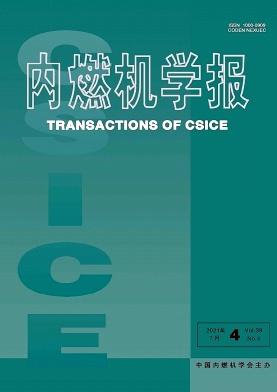DEVELOPMENT OF BOOST SYSTEMS FOR FORCED DIESEL ENGINES
Q4 Engineering
引用次数: 0
Abstract
The paper analyzes the world experience in boosting diesel engines by improving the air supply system, i.e. the installation of drive superchargers and (turbochargers) TKR. Two main types of mechanical superchargers, rotary and centrifugal, are considered. The most common models of rotatory superchargers, Roots, Eaton and Lysholm, the scheme and principle of operation of centrifugal superchargers are analyzed. The main disadvantage of mechanical supercharging is that all the power needed to compress the air is taken from the engine crankshaft. Therefore, gas turbine supercharging is considered the most promising. Single-stage boost systems are analyzed using the example of well-known car manufacturers such as Pegaso and Volkswagen. It has been established that the use of turbocharging increases engine efficiency, which leads to a decrease in specific effective fuel consumption. The further development is aimed at improving single-stage turbocharging systems, reducing the size of turbochargers, reducing inertia, using turbine controls and using two-stage boost systems. In addition, an analysis is made of the work of well-known companies developing boost systems (ABB Turbo Systems, MTU, MAN, Borg Warner Turbo System), which showed that for diesel engines with a liter capacity of more than 60 kW / l it is rational to use a two-stage boost system with intermediate cooling of the charge air. The advantages of using a two-stage boost system are: high torque at low engine speeds; increase in rated power; increase in boost pressure; reduction in fuel consumption; smoke reduction; high potential to reduce NOx emissions; improved transient characteristics. The use of a two-stage controlled turbocharging with cooling of the charge air type R2S achieves a high average effective pressure. Depending on the setting, the system can be implemented both at low and high engine speeds.柴油机增压系统的研制
本文分析了世界上通过改进供气系统,即安装驱动增压器和TKR(涡轮增压器)来增压柴油机的经验。考虑了两种主要类型的机械增压器,旋转式和离心式。分析了罗茨、伊顿和Lysholm三种最常见的旋转增压器型号,离心增压器的方案和工作原理。机械增压的主要缺点是压缩空气所需的所有动力都来自发动机曲轴。因此,燃气轮机增压被认为是最有前途的。以Pegaso、Volkswagen等知名汽车制造商为例,对单级增压系统进行了分析。已经确定使用涡轮增压可以提高发动机效率,从而导致比有效油耗的降低。进一步的发展旨在改进单级涡轮增压系统,减小涡轮增压器的尺寸,减少惯性,使用涡轮控制和使用两级增压系统。此外,对知名增压系统公司(ABB涡轮增压系统、MTU涡轮增压系统、MAN涡轮增压系统、Borg Warner涡轮增压系统)的工作进行了分析,结果表明,对于升气量大于60 kW / l的柴油机,采用增压空气中间冷却的两级增压系统是合理的。使用两级增压系统的优点是:在低发动机转速下的高扭矩;增加额定功率;增压压力增加;减少燃料消耗;烟减少;减少氮氧化物排放的潜力大;改进的瞬态特性。使用两级控制涡轮增压与冷却的增压空气型R2S实现了一个高的平均有效压力。根据不同的设置,该系统可以在低和高发动机转速下运行。
本文章由计算机程序翻译,如有差异,请以英文原文为准。
求助全文
约1分钟内获得全文
求助全文

 求助内容:
求助内容: 应助结果提醒方式:
应助结果提醒方式:


